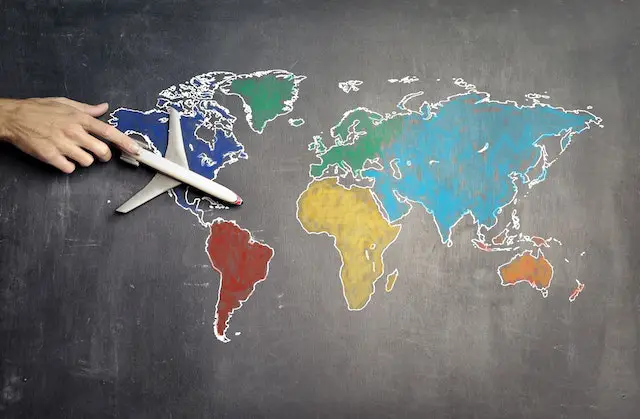Regionalism allows for more localized decisions to be made, fostering a sense of community and shared values among nations in the same region. It can also help boost trade and economic growth within a specific area. Globalization encourages interconnectedness between nations worldwide by increasing international trade, communication, and cultural exchange. This leads to increased efficiency in production processes while expanding job opportunities for people around the globe.
What is regionalism?
Regionalism is a concept that focuses on promoting economic and political cooperation among countries within a specific geographic region. The primary goal of regionalism is to enhance trade relations, investment flows, and cultural exchange between neighboring nations.
Regional integration can take various forms, including free trade agreements (FTAs), customs unions, common markets, or even monetary unions. By pooling resources such as labor, capital and natural resources in the region through these agreements or arrangements, regionalism aims to create economies of scale and promote sustainable development.
Proponents of regionalism argue that it helps reduce trade barriers among member states while increasing competitiveness globally by creating larger markets for businesses. It can also lead to greater access for consumers to different goods and services produced within the region at lower prices.
However, there are also drawbacks associated with regionalism. Critics suggest that it may cause market distortions due to preferential treatment given to member states over non-members when trading outside the region. Additionally, some claim that this approach could potentially lead to conflicts with countries outside the bloc if they feel unfairly excluded from opportunities created through regional integration efforts
What is globalization?
(Photo by Andrea Piacquadio )

Globalization is a term that refers to the process of integrating various economies, societies and cultures through the increasing flow of goods, services and ideas between nations. It has been driven by advancements in communication technology and transportation which have made it easier and cheaper for people to connect with each other across borders.
One major impact of globalization is the growth of international trade which has resulted in increased competition among businesses from different countries. This has led to lower prices for consumers as companies strive to remain competitive in global markets. Additionally, globalization has enabled companies to access new markets around the world which can lead to increased profits.
However, there are also downsides to globalization such as job losses due to outsourcing or automation. Also, some argue that it contributes towards income inequality within countries and encourages environmental degradation as companies seek out cheaper production methods.
Moreover, cultural homogenization is another controversial aspect of globalization where local cultural identities become diluted by Western influences spread through popular culture like movies or music.
Globalization has undoubtedly brought many benefits such as improved economic opportunities for individuals and businesses alike; it remains a highly contested topic with both positive and negative impacts on society at large.
Regionalism Vs. Globalization – Key differences
Regionalism and globalization are two different concepts that have a significant impact on the economy, politics, culture, and society. Regionalism refers to the formation of economic and political blocs within specific regions or countries with shared goals, interests, cultures or geopolitical considerations. The primary objective of regionalism is to promote regional cooperation and development by reducing internal trade barriers.
On the other hand, globalization is characterized by increasing connectivity between nations through cross-border movements of goods, services capital as well as people. Globalization emphasizes interdependence among national economies which leads to a more integrated world economy.
The key difference between these two concepts lies in their scope and objectives. While regionalism emphasizes local economic integration with neighboring countries for mutual benefits such as market access expansion, investment promotion or infrastructure development; globalization focuses on breaking down international barriers to trade in order to create new opportunities for businesses around the globe.
Another difference between these two concepts concerns their level of institutionalization. Regionalism often involves formal institutions such as supranational organizations like the European Union or ASEAN while globalization is typically viewed more broadly without any comparable formal institutions at a global level.
Both regionalism and globalization have contributed significantly towards shaping our modern interconnected world today. However, they differ substantially in terms of objectives and approaches taken towards achieving them.
Pros and cons of regionalism
Pros of regionalism involve the strengthening of local economies, as it promotes intra-regional trade and investment. This results in increased employment opportunities for citizens within the region. Regionalism also allows for countries to work together towards common goals, such as addressing environmental concerns or improving infrastructure.
Regionalism can also lead to greater cultural exchange and understanding between member countries, resulting in a more diverse and interconnected society. Additionally, regional integration can provide smaller nations with greater bargaining power when negotiating with larger superpowers.
However, there are potential downsides to regionalism. One concern is that it may create barriers to trade outside of the region by imposing tariffs or other restrictions on imports from non-member countries. This could limit economic growth and development beyond the boundaries of the bloc.
Another issue is that regional alliances may exacerbate pre-existing political tensions between member states, particularly if certain groups feel marginalized or disadvantaged by the arrangement.
Some critics argue that regionalism can be exclusionary and create a sense of division among neighboring nations rather than promoting unity on a global scale.
Pros and cons of globalization
Globalization has its advantages and disadvantages. One of the main benefits of globalization is that it leads to increased economic growth, as businesses can expand their markets beyond their local territories. This results in more job opportunities for people around the world.
Another advantage of globalization is that it promotes cultural exchange and understanding between different countries, leading to greater tolerance and appreciation of diversity. Furthermore, technological advancements brought about by globalization have made communication easier than ever before, allowing people from all over the world to connect with each other instantly.
However, there are also negative aspects associated with globalization. For example, it can lead to increased inequality both within and between countries, as some regions benefit more than others from global trade. Additionally, multinational corporations may prioritize profits over ethics or social responsibility when operating in foreign countries.
Furthermore, environmental degradation is another concern associated with globalization due to the increase in international transport which contributes significantly to greenhouse gas emissions. The exploitation of natural resources by multinational companies also poses a significant threat to ecosystems worldwide.
While globalization offers many benefits such as increased economic growth and cultural exchange; we must be mindful of its negative impacts on inequality and ecological systems if we want a sustainable future for our planet’s inhabitants
What is an example of a globalization?
One of the most notable examples of globalization is the rise and expansion of multinational corporations such as McDonald’s, Coca-Cola, and Apple. These companies have established a global presence by expanding their operations into various countries worldwide.
For instance, McDonald’s operates in more than 100 countries with over 38,000 restaurants globally. Its menu may vary depending on location but it has essentially maintained its brand identity all over the world.
In addition to that, advancements in technology and communication have also contributed significantly to globalization. The internet has made it easier for people from different parts of the world to communicate and do business with one another effortlessly.
Furthermore, international trade agreements like NAFTA (North American Free Trade Agreement) promote free trade among participating nations resulting in an increase in imports and exports between countries; thereby promoting economic growth both locally and internationally.
Globalization has led to significant changes in our interconnected world today as we can easily access goods, services or ideas from any part of the globe thanks to technological innovations that connect us together.
What is an example of regionalization?
(Photo by Christian Lue on Unsplash )

Regionalization refers to the process of countries or regions coming together to form a common market, either for economic or political reasons. One example of regionalization is the European Union (EU). The EU is an organization made up of 27 member states located primarily in Europe. Its primary goal is to promote free trade and open borders between its members.
The EU has implemented a number of policies that have helped facilitate regional integration, such as the creation of a single currency (the euro) and the introduction of visa-free travel. These policies have allowed people and businesses within the EU to move more freely across national borders, which has had a significant impact on economic growth in Europe.
Another example of regionalization is NAFTA (North American Free Trade Agreement), which was signed by Canada, Mexico, and the United States in 1994. This agreement aimed at eliminating tariffs on goods traded between these three nations while also promoting investment among them.
Regionalization can be beneficial for countries because it allows them to work together towards common goals while also increasing their bargaining power with other nations outside their region. However, it can also lead to increased competition between local industries and job loss due to outsourcing.
What are the 3 types of globalization?
Globalization is a complex process that can be categorized into three different types: economic, political, and cultural.
Economic globalization refers to the integration of economies across borders through trade, investment and production. It involves the free movement of goods, capital and services among countries. This type of globalization has led to an increase in international trade and the growth of multinational corporations.
Political globalization involves the spread of political norms, values and institutions across borders. It includes the formation of supranational organizations such as the United Nations or World Trade Organization that work towards global governance.
Cultural globalization deals with the dissemination of cultural ideas, practices and products around the world. The rise of technology has made it easier for people to consume culture from other parts of world leading to factors like homogenization or hybridization.
Each type impacts society differently depending on various circumstances including geographical location, resources available etc. Understanding these types helps policymakers make informed decisions on how they affect citizens both positively or negatively while making policies based on them accordingly
Featured Image By – Photo by Markus Spiske








